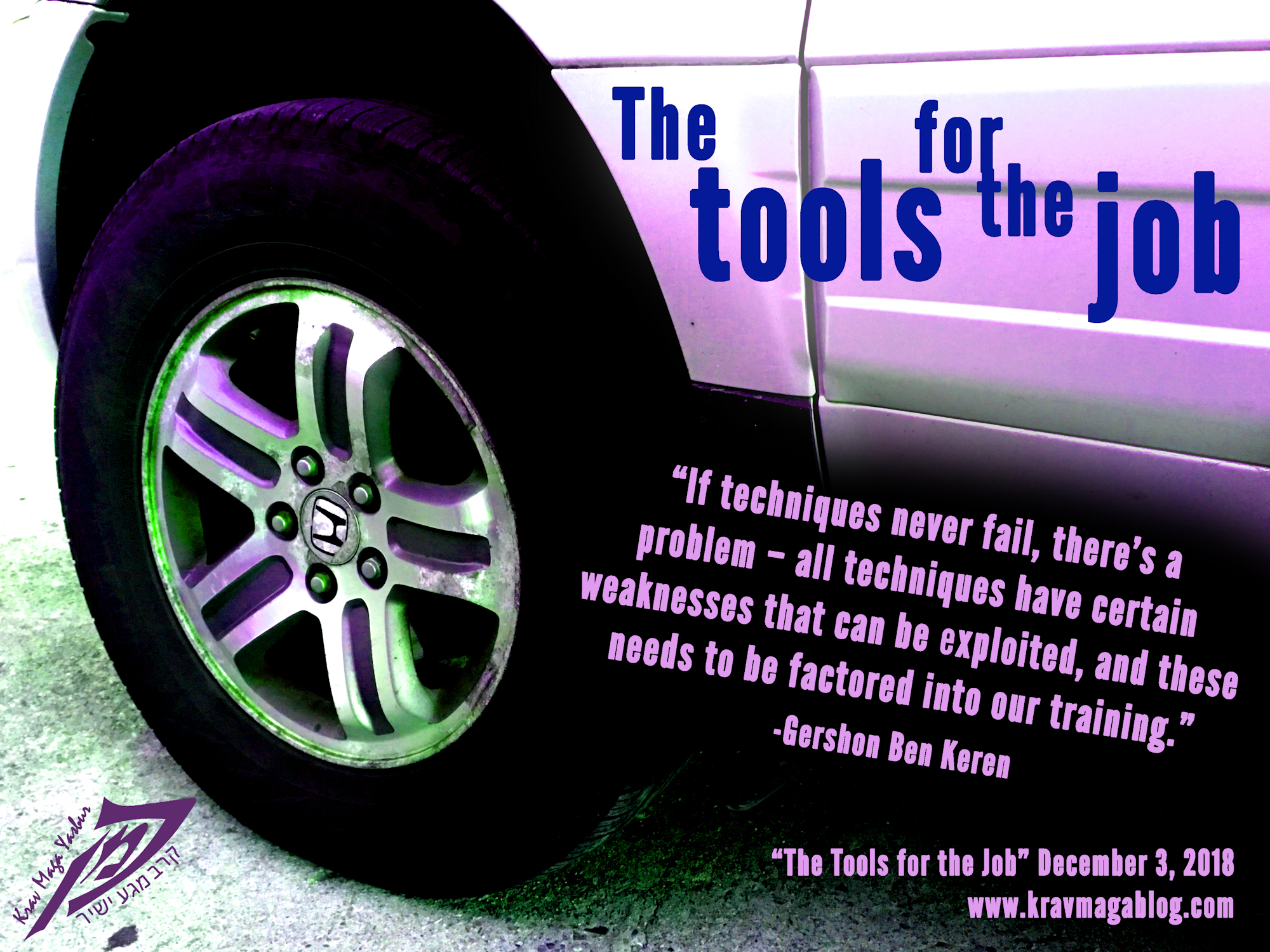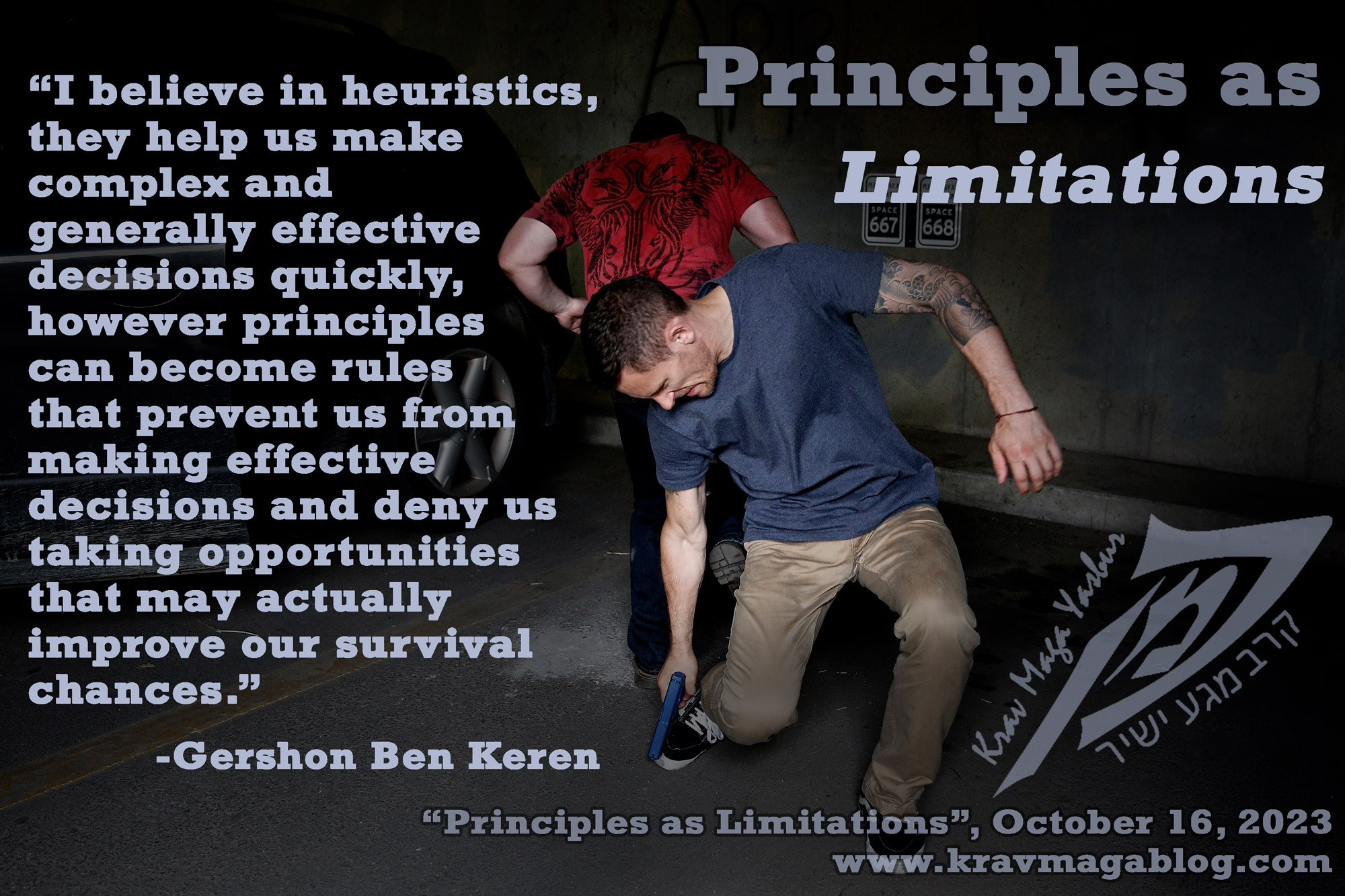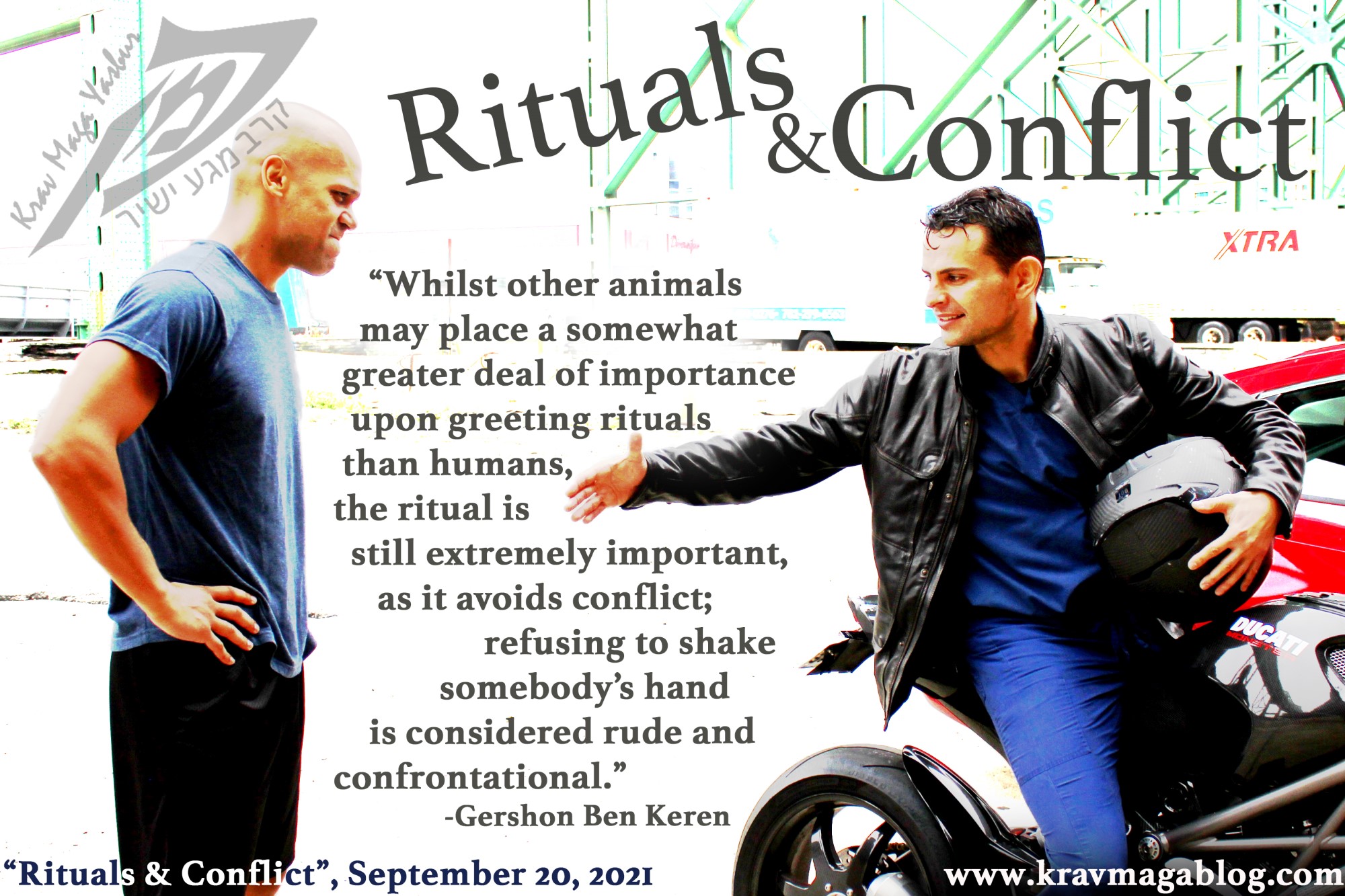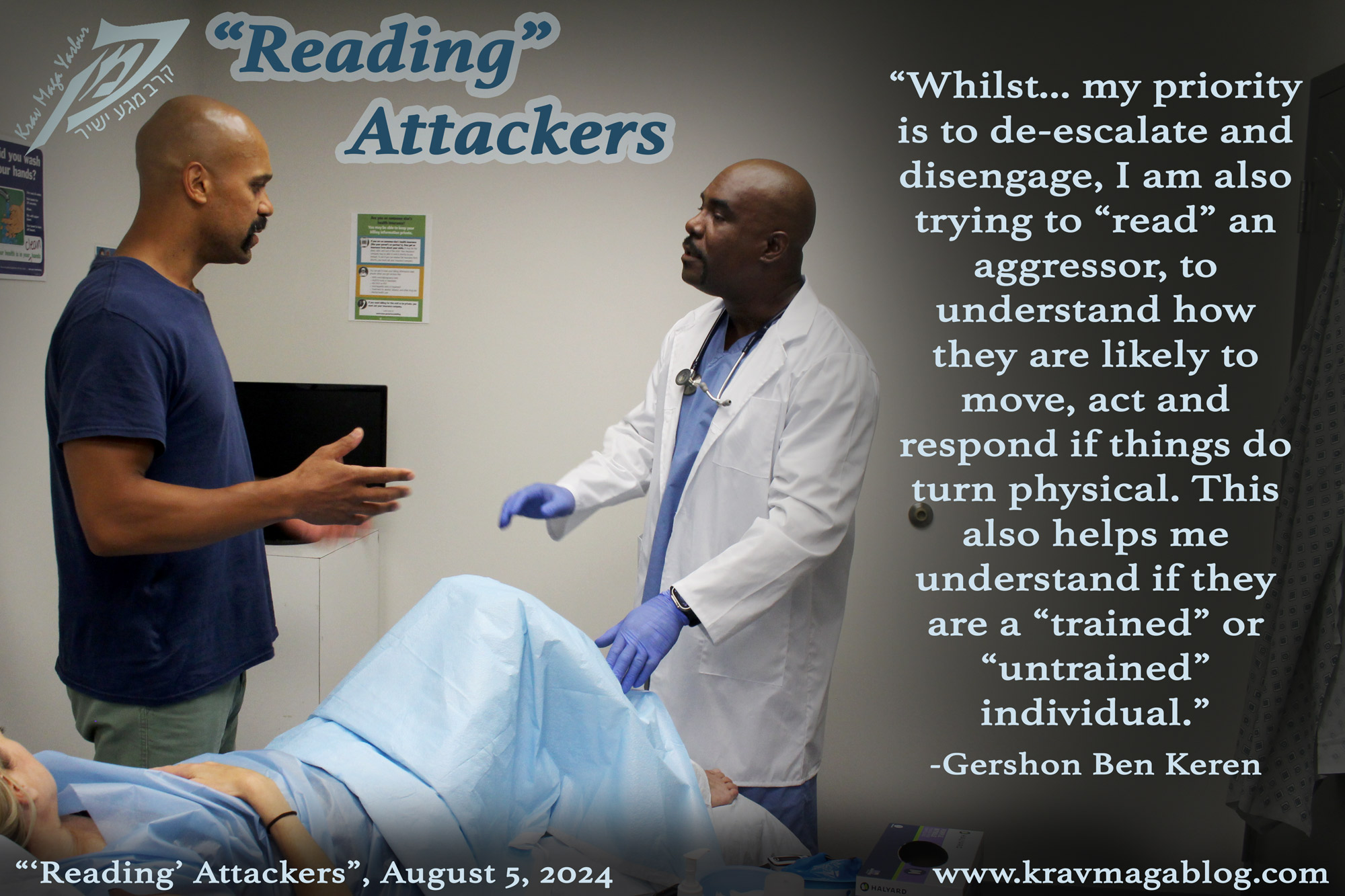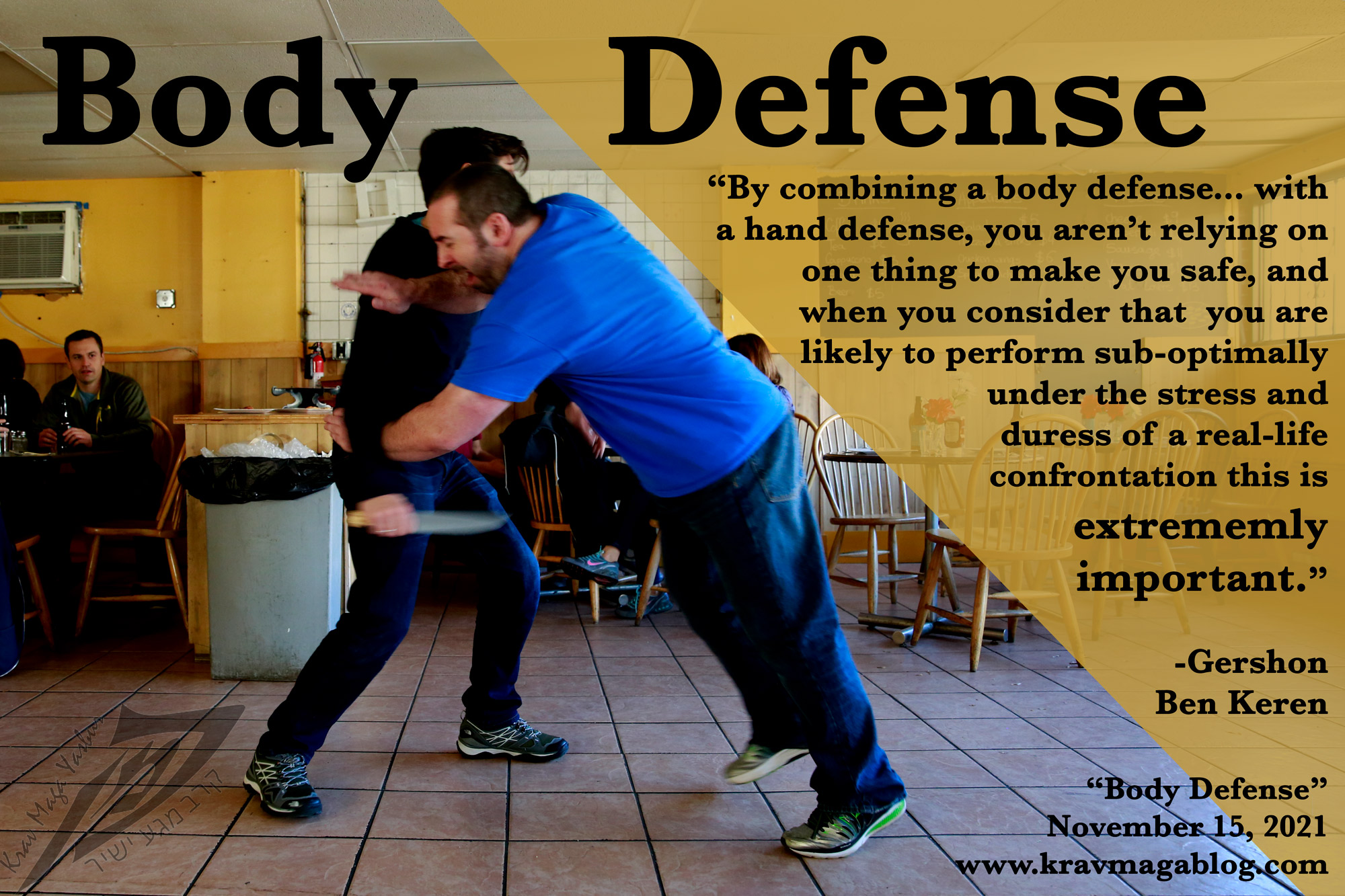Subtleties & Fine Details, is an article written by Gershon Ben Keren, a 5th Degree Black Belt in Krav Maga, who teaches Krav Maga in Boston, MA. He has also authored three Amazon best-Selling Books on Krav Maga.
It is very easy to get bogged down in the fine details of something, and miss the point. A visiting student from another school, once tried to engage me in a debate, about the orientation of the fist when punching. His argument against me fully rotating the fist – so that the thumb is positioned down, at the “bottom” of the fist – was that this was unnatural, and that if you raised the arms straight up and made a fist, it would be at a 45-degree angle. I explained why I punched this way e.g. fist-to-wrist alignment, engagement of the shoulder in the strike etc. whilst at the same time, not trying to counter his arguments and reasons for striking/punching the way he did (if something works for you, I’m not going to try to convince you to do something else – there are people who teach and deliver their roundhouse kicks, differently to me, and with the same amount of power; I’m not going to try to teach them a different method, if the end result will be the same). Unfortunately, his goal was to try to get me to change the orientation of my fist when punching, by simply repeating his argument. Eventually, I asked him to demonstrate what his punching looked like. Like he said, his fist was at a 45-degree angle, however his hips hadn’t turned, weight hadn’t transferred forward, the back muscles hadn’t engaged, the hips hadn’t “sunk”, etc. There was so much to work on, before the “debate” on fist orientation was to be had, however the fixation on one component, was making him blind to everything else. He was focusing so much on 5% of what he was doing, that 95% of what goes into making a good punch/strike was being lost.
It is often these little differences, that are seen to define systems and styles, and lead people to conclude that what they are doing is right, and what everybody else is doing is wrong. When delivering a punch, with as much power as possible, whilst remaining stable and balanced, there are certain things that have to happen bio-mechanically, and if every instructor sat down together and discussed these, we’d be largely in agreement; there might be some nuances, and some exceptions and caveats noted, but by-and-large we’d all agree, on the components that need to be in place. This is because several factors, that we’d all agree on, make up 80-90% of the power of the punch, and this is the same for many techniques.
I remember having great difficulty, in my early days of training, determining whether a gun positioned to the side of my head was in front of the ear or behind it (under the real-life stress and duress of having a live firearm placed there, I’m not convinced I’d be able to make an exact determination of its position). The idea being that if it’s positioned forward of the ear, the gun should be pulled forward to reduce the amount of time, that your head is in the line of fire – and if behind, backwards towards the aggressor. It’s also worth noting that these preferred methods, may not be possible, depending on where the aggressor is positioned, and how they are controlling you with their other arm; your body movement may be restricted so that you are unable to move in the direction you’d want to, etc. Whilst the position of the gun is a factor, it’s not as important as your ability to move the gun away from your head as fast as you can. A faster hand movement in the “wrong” direction is in fact more important than a slower hand movement in the “right” direction. If the success of your survival is wholly dependent on determining whether the weapon is half-an-inch, forwards or back from the ear, it is probable that you don’t possess the ability to make either technique work. It is important to understand which skills and abilities are needed to make a technique successful, and which components are the most important to a technique’s success, and to work on developing these.
In real-life scenarios, certain details aren’t available to us, which might appear to be in the training environment. In a “controlled” sparring environment, picking targets to strike/hit, is a luxury that the relative time and space given to you, allows you to do. In a real-life assault, no attacker(s) will afford you this luxury. Many years ago, I attended a seminar, where an instructor was talking about where to aim on the jaw/chin, and at what angle to strike, in order to guarantee a knock-out. I’m not going to say it’s not possible – and you can increase your chances of landing such strikes, by positioning yourself in the pre-conflict phase of a confrontation and/or striking pre-emptively – but being able to put all of those pieces together under stress and duress, and get the timing right, is extremely difficult. My default advice for striking the face, is to aim at the center of the thing, which floats above the shoulders – that’ll give you a good chance of connecting with the target (and that can be a lot harder than it seems when you practice it in the training environment – which is why I’m an advocate of large striking surfaces, such as the forearms and shins, against relatively large targets such as the neck/trapezius and legs). Specifics and details are important, but they’re not as important as those things and components, which power the technique, or increase the chances of a technique being successful.
Fighting rarely comes down to subtleties. Training, sparring? Yes, there are subtleties, but real-life fighting? Almost never. That doesn’t mean we should neglect the details in training, or not break techniques down, etc. but it does mean we should understand the “few” things that make a technique work, or increases its likelihood of success, and prioritize our emphasis on these. These are the foundations that support everything else, and without them, we will have nothing to build on or develop. Good foundations on their own, will support us much better, and increase our survival chances, more than anything else.
0 COMMENTS